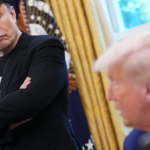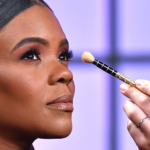When I meet Chase Crandall, he’s putting up a barbed wire fence.
Even on Zoom, the Wyoming sky is clearly in the background, with an expanse of ranch land stretching out into the distance. Crandall is a sixth-generation rancher, who’s tending to land that was originally settled by his ancestors in the 1850s—but is thinking proactively about technology in 2025.
“Typically, ranchers are fairly cheap and careful about spending money,” said Crandall. “And we try to be the same. We try to be as low-cost and run as efficiently as possible.”
Farming has historically been technologically-forward, from the invention of the plow in ancient Mesopotamia to the implementation of the mechanical reaper in the Industrial Revolution. So, Ambrook—the accounting software startup that Crandall uses and the reason we’re talking—is part of a long tradition of farming-focused tech. Ambrook was built expressly with American agriculture and industry in mind, filling a gap that existing software like QuickBooks leaves on the table, said Mackenzie Burnett, CEO and cofounder at Ambrook.
“Farms are in this delta where they are unusually complex for their size and revenue profile,” said Burnett, whose parents are both plant health specialists at the USDA. “The mom and pop shops are generally doing pretty thin margins, and they are running on software that’s built for less complex businesses. They tend to be what we kind of call multi-P&L, dealing with multiple revenue lines. Oftentimes a lot of farms have to vertically integrate in order to just make the margin profiles work.”
Founded in 2021, Ambrook has raised a $26.1 million Series A, Fortune has exclusively learned. Thrive Capital and Figma’s Dylan Field (via Field Ventures) led the round, with participation from existing investor Homebrew. BoxGroup, Designer Fund, Mischief, and Not Boring are among Ambrook’s new investors in this round, bringing the company’s total funding to $29 million. Farming is complex, Burnett says, because inventory (like livestock) has a literal lifecycle—it is born, grows, and dies.
“Most folks in tech have an idea of how complex a factory floor is in manufacturing,” said Burnett. “But farming involves biological factors, in the sense you have inventory that is born, grows and dies. That is a huge complication, and understanding how to manage that isn’t something that QuickBooks—or even a lot of SaaS software—is built for. It’s built with a different kind of professional in mind.”
Ambrook’s rise comes at a “challenging” time for farming in America, one that’s trending towards seeing “fewer farmers who are larger, more sophisticated, more specialized, and more consolidated,” said Jonathan Coppess, former administrator of the Department of Agriculture’s Farm Service Agency.
“Farming, like the rest of the economy, is facing real uncertainty around technological advancements,” Coppess wrote to Fortune via email. “What will be the impact of artificial intelligence, advanced robotics, etc.? Add to that the political and geopolitical uncertainties (from tariff conflicts to wars) and those of climate change. The risks and uncertainties are magnifying in real time, making it very difficult to make any predictions, or to have confidence that trends of the past are indicative of the future.”
So, what does it take to keep a family farm a thriving business? Generational planning, for one—Calvin Crandall, the ranching family’s patriarch, placed the land in a perpetual trust a few years ago, ensuring the land would stay together (and, by extension, a viable business) across future generations. Efficiency and margins matter, especially when it comes to tracking inventory that grazes, gives birth, and dies.
“What Ambrook solves for me is time management,” said Chase. “Everything’s live, and I don’t have to manually update anything. Our margins matter, because there’s so much you can’t control. Can’t control the cattle market, which can get crazy and sometimes you just have to take the price you can.”
How many cows do the Crandalls have anyway? Calvin drives by while Chase and I are on a Zoom, and stops to chat. I ask. The two tell me with mirth and kindness that the question is quite a faux pas.
“That’s like me asking you ‘how much money do you have in your bank account right now?’” Chase laughs.
His dad jumps in: “You’ve got some money in your bank account, and we’ve got some cows on our land!”
See you tomorrow,









